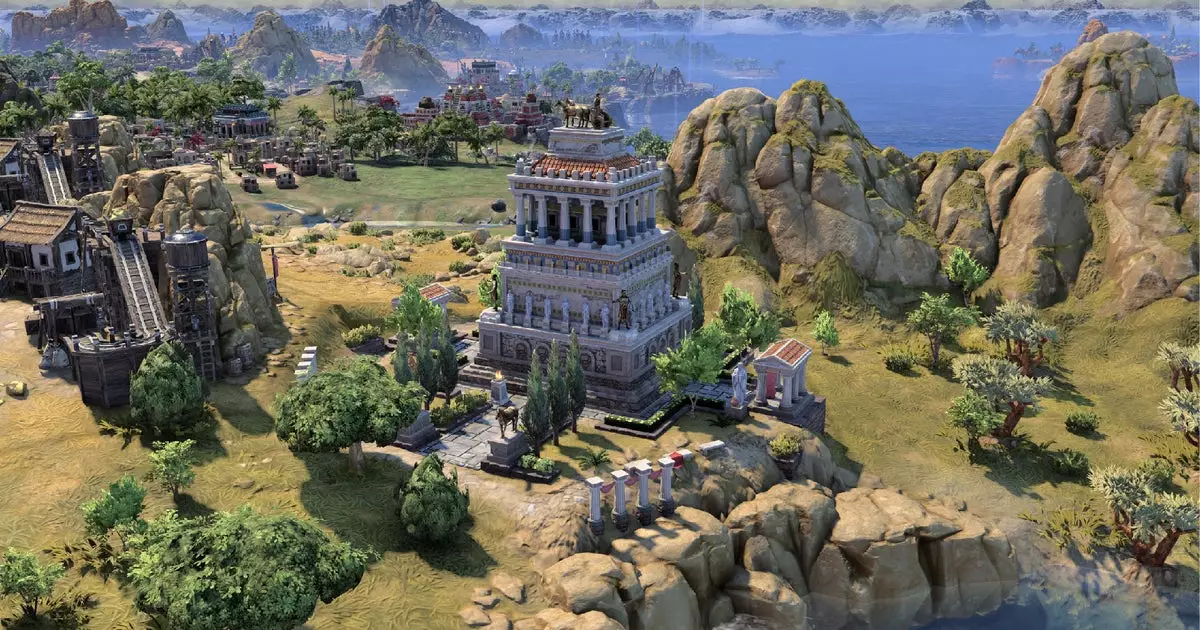In the world of complex strategy games, evolution is both inevitable and necessary. Civilization’s recent update, version 1.2.4, exemplifies this truth in a striking manner, not merely tweaking game mechanics but fundamentally altering the way mods interact with the core experience. Firaxis’ deliberate shift to a new UI system demonstrates their intent to future-proof their game while risking upheaval in the existing mod community. The decision underscores a critical insight: progress often demands disruption. By moving to a more dynamic UI workflow, the developers have laid a more reactive and scalable foundation but at the expense of breaking many existing mod files. This scenario reflects a broader industry truth—innovation requires bold experimentation, even if it temporarily affects the dedicated community of modders and enthusiasts.
Still, this upheaval is not without purpose. Firaxis explicitly states that these behind-the-scenes changes will ultimately produce a more polished and responsive interface. From my perspective, this approach offers a glimpse into their commitment to long-term improvement rather than short-term convenience, even if current adjustments cause frustration. The opportunity to revert to previous versions via Steam’s beta channels signifies a respectful acknowledgment of the community’s attachment and the importance of flexibility during transitions. This move fosters a healthy balance between innovative foresight and community stability, yet it also places a spotlight on how game developers must walk a tightrope—advancing technological capabilities without alienating their loyal user base.
Refining the Balance of Power: Adjustments that Reshape Victory Conditions
On the surface, focus shifts to the game’s various wonder placements and civic branches, reflecting a refined balancing act designed to prevent runaway victories through over-reliance on specific structures or civilizations. Wonder adjustments—like making the Erdene Zuu available earlier and repositioning iconic structures such as the Colossus—demonstrate a thoughtful approach to pacing and strategic diversity. These tweaks aim to promote a more nuanced playstyle, encouraging players to explore a wider variety of strategies rather than defaulting to a few dominant tactics.
Moreover, the nerfs to prominent structures like the Gate of All Nations and House of Wisdom serve as a reminder that in a game about cultural and technological supremacy, balance remains paramount. When certain wonders create disproportionate influence or ease of victory, the integrity of gameplay suffers. In this way, Firaxis’ changes reveal their awareness of how delicate the equilibrium is—tweaking one element can ripple through the entire ecosystem of gameplay. Conversely, the slight buff to structures like Petra and the Eiffel Tower indicates a measured approach to restoring diversity. From my critical viewpoint, such subtle balancing acts are essential in maintaining player engagement and preventing stagnation, but they also reflect the perennial challenge developers face: to craft a fair yet captivating experience that rewards skill and strategic foresight.
Long-Term Impact and Community Dynamics: Striking a Careful Balance
Perhaps the most profound aspect of this update lies not in the specific mechanics but in its implications for game longevity and community interaction. The modifications to age transitions—particularly managing alliance continuity and resource rollover—highlight the developers’ efforts to facilitate more meaningful, sustainable gameplay across ages. This move encourages players to think beyond immediate gains and plan long-term strategies, fostering a deeper level of engagement.
Simultaneously, the AI tweaks exemplify a desire to elevate challenge and reduce unpredictability. Making AI opponents smarter and more consistent ensures that noteworthy victories feel earned rather than handed to the player through inexplicable errors or overly forgiving decisions. From my critical lens, this represents a vital step in elevating the AI to a true strategic competitor, reinforcing the game’s core competitive spirit.
Yet, these changes are not without risks. Heavy-handed modifications, particularly those altering game balance or interface workflows, have the potential to alienate players who prefer stability or who are less inclined to adapt quickly. The developers’ transparent communication, including acknowledging the issues caused by the update, exemplifies good practice, but it also signals the ongoing challenge: how to innovate without sacrificing the stability that loyal players depend on.
This delicate dance between evolution and preservation, innovation and familiarity, ultimately defines the current state of Civilization and similar strategy games. Firaxis’ bold moves reflect a readiness to challenge norms and reshape long-standing mechanics, which could invigorate the genre or provoke frustration if not executed thoughtfully. As a critic, I believe the strength of their approach will be measured in how well they balance these competing priorities and how deeply they listen and respond to community feedback in the months ahead.

